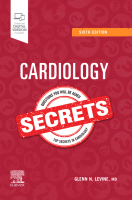Physical Address
304 North Cardinal St.
Dorchester Center, MA 02124

1 What is myocarditis? Myocarditis is an inflammatory disease of the myocardium, which can occur as a result of exposure to a discrete external trigger or to antigens such as viruses, bacteria, parasites, toxins, or drugs, or as a result…

1 What are the indications for coronary artery bypass grafting (CABG)? According to the American College of Cardiology/American Heart Association (ACC/AHA) guidelines, class I indications for CABG include significant left main stenosis, three-vessel coronary artery disease (CAD), and two-vessel disease…

1 What does the term percutaneous coronary intervention mean? Andreas Gruentzig performed the first successful balloon angioplasty procedure in humans in 1977. Initial coronary interventions involving only balloon angioplasty were referred to as percutaneous transluminal coronary angioplasty (PTCA). Since then,…

1 Define cardiogenic shock. Cardiogenic shock is a state of end-organ hypoperfusion due to cardiac failure and the inability of the cardiovascular system to provide adequate blood flow to the extremities and vital organs. In general, patients with cardiogenic shock…

1 What are the electrocardiographic criteria for the diagnosis of ST-segment elevation myocardial infarction? Criteria for the diagnosis of ST-segment elevation myocardial infarction (STEMI) derive from criteria established for the administration of thrombolytic therapy, which evolved in the late 1980s…

1 What is non–ST-elevation acute coronary syndrome? It is now recognized that unstable angina, non–Q-wave myocardial infarction (MI), non–ST-segment elevation MI, and ST-segment elevation myocardial infarction (STEMI) are all part of a continuum of the pathophysiologic process in which a…

1 Can a patient with new-onset chest pain have chronic stable angina? The term “chronic stable angina” refers to angina that has been stable in frequency and severity for at least 2 months and with which the episodes are provoked…

1 Are most emergency room visits for chest pain caused by acute coronary syndromes? No. Acute coronary syndromes (e.g., unstable angina, myocardial infarction) account for only a small percentage of emergency room (ER) visits for chest pain. Depending on the…

1 What constitutes cardiac catheterization? Cardiac catheterization typically includes the following four procedures: coronary angiogram, left heart catheterization, left ventricular (LV) angiogram, and right heart catheterization. Coronary angiogram refers to opacification of coronary arteries with iodinated contrast after selective cannulation…

1 What is a Swan-Ganz catheter? A Swan-Ganz catheter is a soft, flexible catheter with an inflatable balloon at its tip that is used in right-sided heart catheterization. The balloon tip allows the catheter to float with the flow of…